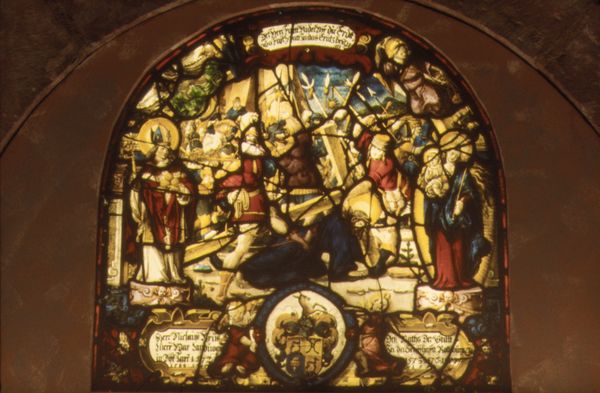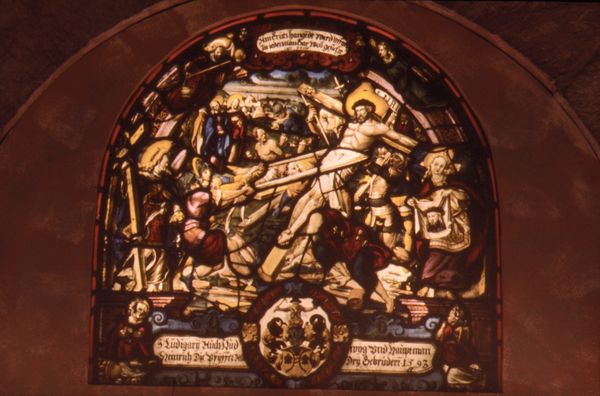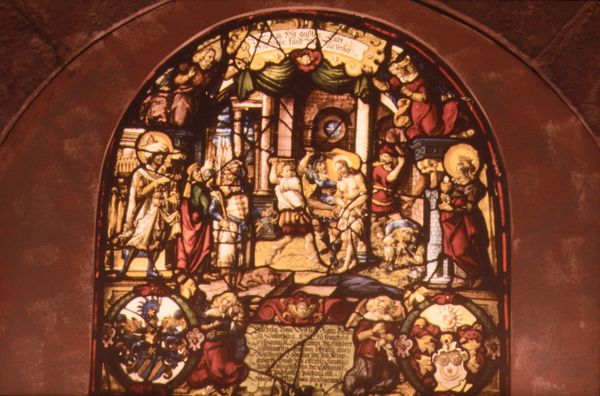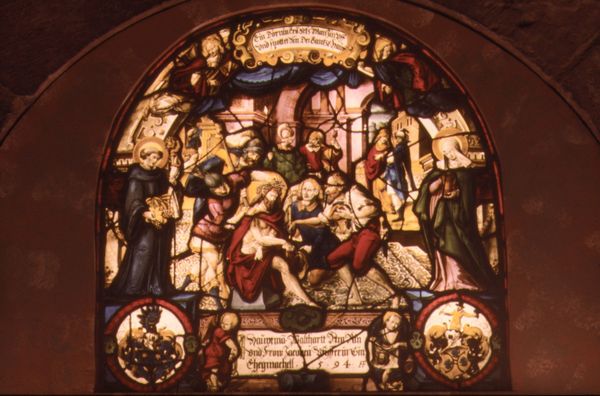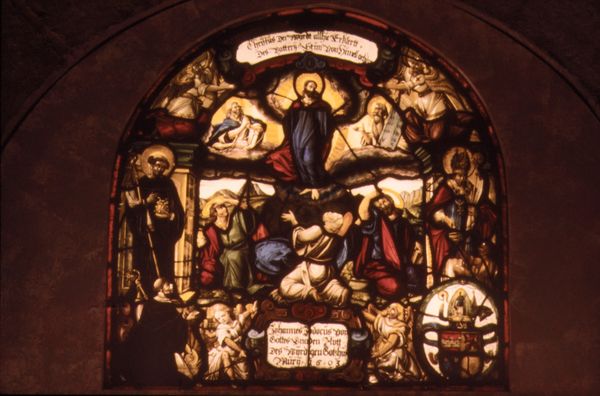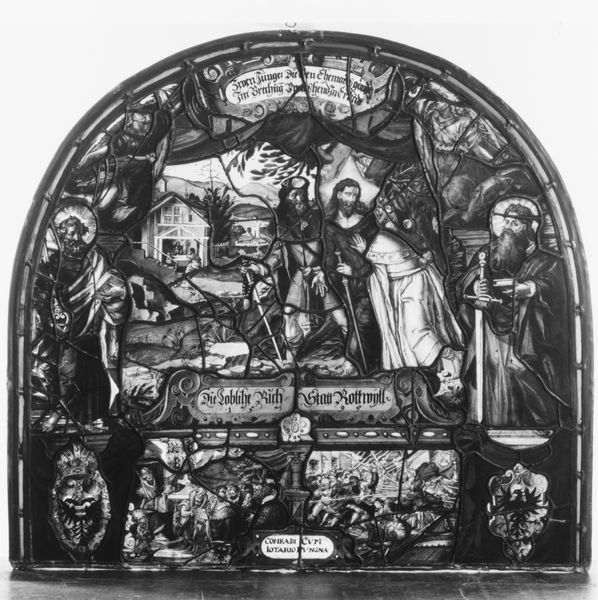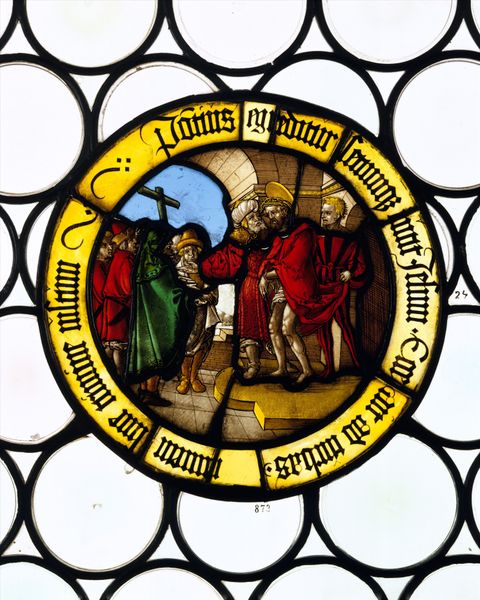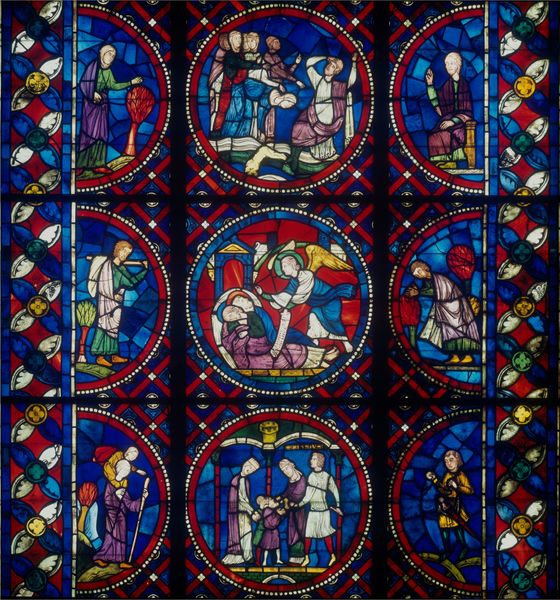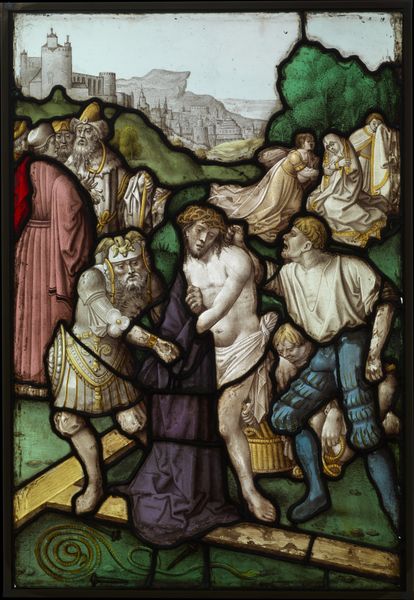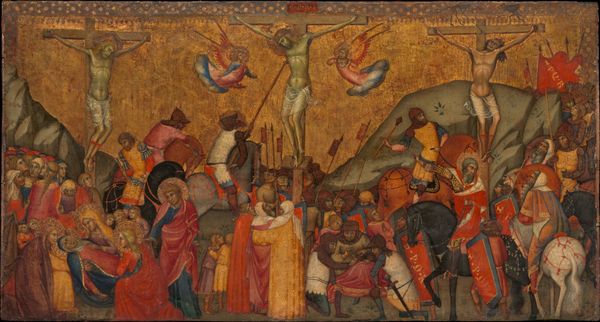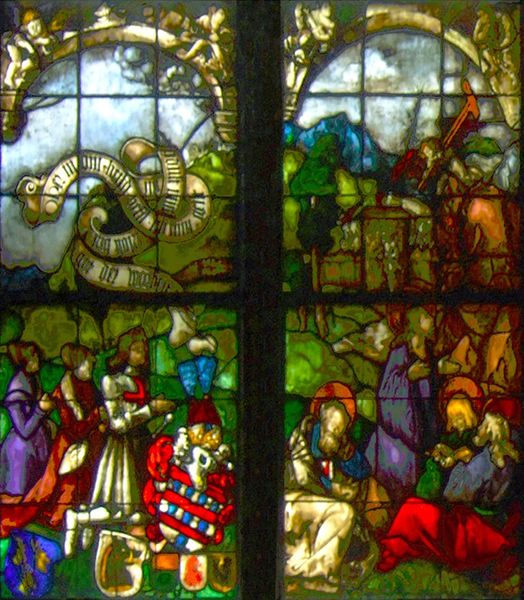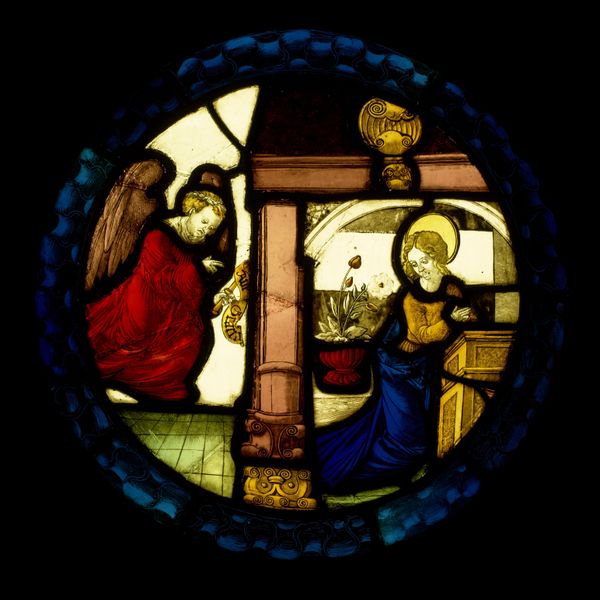
glass, sculpture
#
medieval
#
narrative-art
#
sculpture
#
figuration
#
glass
#
oil painting
#
soldier
#
sculpture
#
history-painting
#
decorative-art
#
christ
Dimensions: Overall: 27 1/2 × 29 in. (69.9 × 73.7 cm)
Copyright: Public Domain
Curator: Oh, wow. The light shining through really makes this come alive, doesn't it? Editor: It certainly does. We’re looking at a stained glass panel depicting "Christ Before Annas," created around 1603. It currently resides at The Metropolitan Museum of Art in New York. The use of glass is particularly potent in highlighting the moral transparency in the titular scene, right? Curator: It absolutely strikes a chord, even though the piece seems fragmented and incomplete at first. Like memories surfacing slowly. What gets me is Christ’s expression—that placid look amid total chaos. Editor: Right, his relative passivity compared to the busyness around him is definitely intentional. It speaks to themes of persecution, and unjustly wielded power—a relevant intersection of religious storytelling and social critique during the period, of course. Notice the contrasting vibrant clothing worn by Annas, meant to reflect a regal ostentation? It creates this powerful juxtaposition. Curator: His vibrant regality set against Christ’s somber robes! It's such a captivating portrayal of unjust authority—as if the artwork dares us to consider, even today, who gets to wear those robes. Is justice truly blind if we consider the economic disparity in this staging of religious conflict? Editor: Indeed. The choice of color palette further deepens the drama. Notice how warm hues highlight Annas and his retinue while Christ is cast in cooler tones? That technique underscores not only spiritual differences, but perhaps comments upon class structure at the time of the work's creation, too. How intriguing. Curator: This glass panel, with its fragmented stories and lingering light, makes me think about our own incomplete narratives, like shattered windows reflecting our biases. Maybe it urges us to strive toward some whole truth. Editor: Well said. In a way, viewing art such as this is a continuous project of recontextualization – of perpetually breaking down then piecing back together the very narratives by which we seek meaning in history and the present.
Comments
No comments
Be the first to comment and join the conversation on the ultimate creative platform.
